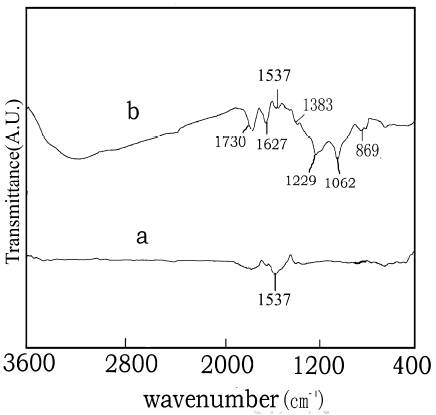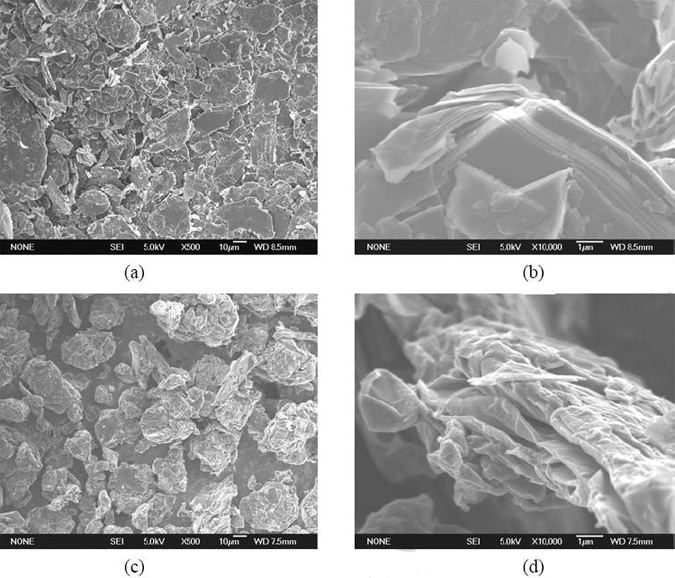Graphite Oxide
Produced by HUMMER’S method‚ good water solubility
Product Detail
CAS No.: 7782-42-5
OLD SKU#: GTOP0001
NEW SKU#: GTOP00A5
ACS can provide larger pack sizes (i.e. 100g‚ 500g‚ 1kg and up to 10kg) and please contact us for a quotation now!
Graphite oxide, also commonly known as graphitic oxide or graphitic acid, is a simple compound of carbon, oxygen, and hydrogen. ACS Material prepares graphite oxide via our own proprietary modified Hummers’ method. Hummers’ method graphite oxide is intercalated with either two ethanol or methanol monolayers; the interlayer distance increases upon temperature decrease depending upon the alcohol.
We offer graphite oxide in large pack sizes (i.e. 100 g‚ 500 g‚ 1 kg and up to 10 kg) at the best prices you’ll find online. Our graphite oxide demonstrates good solubility in water‚ ethanol‚ DMF, et al. The dispersion concentration of graphite oxide in water will be greater than 2 mg/ml and it can be easily dispersed in polar solvents with the help of ultrasound. Graphite oxide is a powerful, versatile material valued by researchers searching for advancements in biomaterials, electronics, and solar technology.
Graphite oxide is just one of the many cutting-edge nanomaterials offered by ACS Material. We value innovation, quality, consistency, value, and service; our 100% commitment to these values is why we’re the trusted supplier of advanced nanomaterials by leading research institutions around the world. Call us today for a free quote and exact product specifications for graphite oxide or other graphene products.
Preparation Method:
Modified HUMMER’S method
| Diameter | 0.5-5 μm |
| Thickness | 1-3nm |
| Oxygen Content | ≤46.0 wt.% |

.jpg)
FT-IR for graphite (a) and graphite oxide (b) XRD for graphite (a) and graphite oxide (b)

TEM for graphite (a‚ b) and graphite oxide (c‚ d)
Graphite Oxide has good solubility in water‚ ethanol‚ DMF et al. The dispersion concentration of Graphite Oxide in water will be greater than 2 mg/ml. Graphite Oxide can be easily dispersed in polar solvents with the help of ultrasound.
Application Fields:
- Preparation of graphene;
- Solar energy;
- Graphene semiconductor chips;
- Conductive graphene film;
- Graphene computer memory;
- Biomaterials;
- Transparent conductive coatings
Notes:
*The research demonstrates that a common contaminant (some potassium salt residues) in graphite oxide renders the material highly flammable. ACS Material-Graphene oxide was purified many times‚ and potassium salt was removed completely. Therefore the consumer can safely use ACS Material-Graphene oxide.
- Kim F‚ Luo J‚ Cruz-Silva R et al. Self-propagating domino-like reactions in oxidized graphite‚ Advanced Functional Materials‚ 2010‚ 20 (17): 2867-2873.
Disclaimer: ACS Material LLC believes that the information on our website is accurate and represents the best and most current information available to us. ACS Material makes no representations or warranties either express or implied, regarding the suitability of the material for any purpose or the accuracy of the information listed here. Accordingly, ACS Material will not be responsible for damages resulting from use of or reliance upon this information.
Research Citations of ACS Material Products
- You, Shujie, et al. “Effect of synthesis method on solvation and exfoliation of graphite oxide.” Carbon, vol. 52, 2013, pp. 171–180., doi:10.1016/j.carbon.2012.09.018.
- You, Shujie, et al. “Enormous Lattice Expansion of Hummers Graphite Oxide in Alcohols at Low Temperatures.” ACS Nano, vol. 7, no. 2, 2013, pp. 1395–1399., doi:10.1021/nn3051105.
- Talyzin, Alexandr V., et al. “The structure of graphene oxide membranes in liquid water, ethanol and water–ethanol mixtures.” Nanoscale, vol. 6, no. 1, 2014, pp. 272–281., doi:10.1039/c3nr04631a.
- Farjami, Elaheh, et al. “Evidence for oxygen reduction reaction activity of a Ni(OH)2/Graphene oxide catalyst.” Journal of Materials Chemistry A, vol. 1, no. 48, 2013, p. 15501., doi:10.1039/c3ta13351f.
- Vorobiev, Alexei, et al. “Graphene oxide hydration and solvation: an in situ neutron reflectivity study.” Nanoscale, vol. 6, no. 20, 2014, pp. 12151–12156., doi:10.1039/c4nr03621b.
- Klechikov, Alexey G., et al. “Hydrogen storage in bulk graphene-Related materials.” Microporous and Mesoporous Materials, vol. 210, 2015, pp. 46–51., doi:10.1016/j.micromeso.2015.02.017.
- Korobov, Mikhail V., et al. “Sorption of polar organic solvents and water by graphite oxide: Thermodynamic approach.” Carbon, vol. 102, 2016, pp. 297–303., doi:10.1016/j.carbon.2016.02.070.
- Alhumade, Hesham, et al. “Corrosion inhibition of copper in sodium chloride solution using polyetherimide/Graphene composites.” The Canadian Journal of Chemical Engineering, vol. 94, no. 5, 2016, pp. 896–904., doi:10.1002/cjce.22439.
- Hong, Xinghua, et al. “Graphite oxide paper as a polarizable electrical conductor in the through-Thickness direction.” Carbon, vol. 109, 2016, pp. 874–882., doi:10.1016/j.carbon.2016.08.083.
- Nieto, Andy, et al. “Graphene reinforced metal and ceramic matrix composites: a review.” International Materials Reviews, vol. 62, no. 5, 2016, pp. 241–302., doi:10.1080/09506608.2016.1219481.
- Yazdi, Alireza Ahmadian, and Jie Xu. “Nitrogen-Doped graphene approach to enhance the performance of a membraneless enzymatic biofuel cell.” Frontiers in Energy, 2018, doi:10.1007/s11708-018-0529-3.
- Rasmi, K. R., et al. “Synthesis and Characterization of Exfoliated Graphene- and Graphene Oxide-Based Composites.” Graphene and Its Fascinating Attributes, 2011, pp. 33–43., doi:10.1142/9789814329361_0002.
- Chakraborty, Souvik, et al. “Interfacial interaction and the fracture toughness (KIC) trends in epoxy nanocomposites filled with functionalized graphene-Based fillers.” Polymer Composites, 2017, doi:10.1002/pc.24675.
- Yuan, Guohao, et al. “Interconnected ruthenium dioxide nanoparticles anchored on graphite oxide: Highly efficient candidate for solvent-Free oxidative synthesis of imines.” Journal of Industrial and Engineering Chemistry, vol. 46, 2017, pp. 279–288., doi:10.1016/j.jiec.2016.10.040.
- Talyzin, Alexandr V., et al. “Brodie vs Hummers graphite oxides for preparation of multi-Layered materials.” Carbon, vol. 115, 2017, pp. 430–440., doi:10.1016/j.carbon.2016.12.097.
- He, Yibo, Songyan Bai, Zhi Chang, Qi Li, Yu Qiao, and Haoshen Zhou. "Porous hybrid aerogels with ultrahigh sulfur loading for lithium–sulfur batteries." Journal of Materials Chemistry A 6, no. 19 (2018): 9032-9040.
- Hossain, Md Faruk, Jae Sang Heo, John Nelson, and Insoo Kim. "Based Flexible Electrode Using Chemically-Modified Graphene and Functionalized Multiwalled Carbon Nanotube Composites for Electrophysiological Signal Sensing." Information 10, no. 10 (2019): 325.

